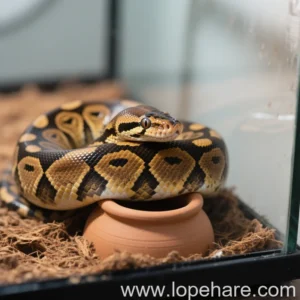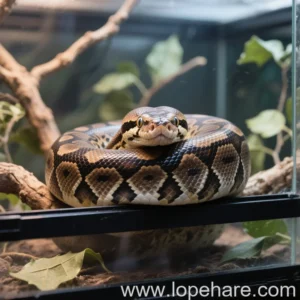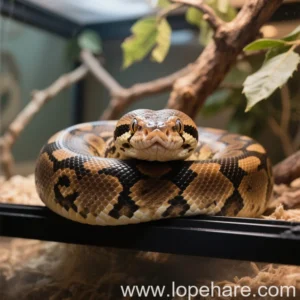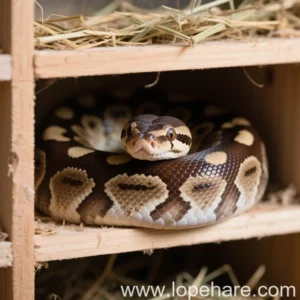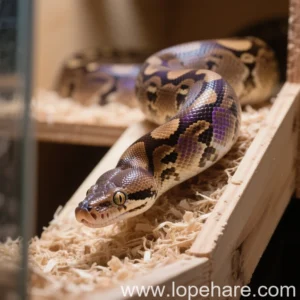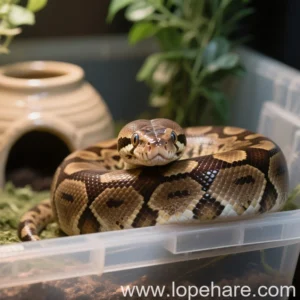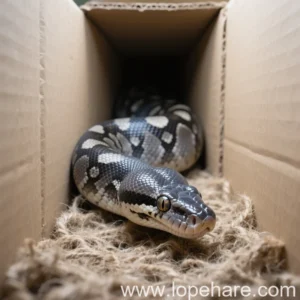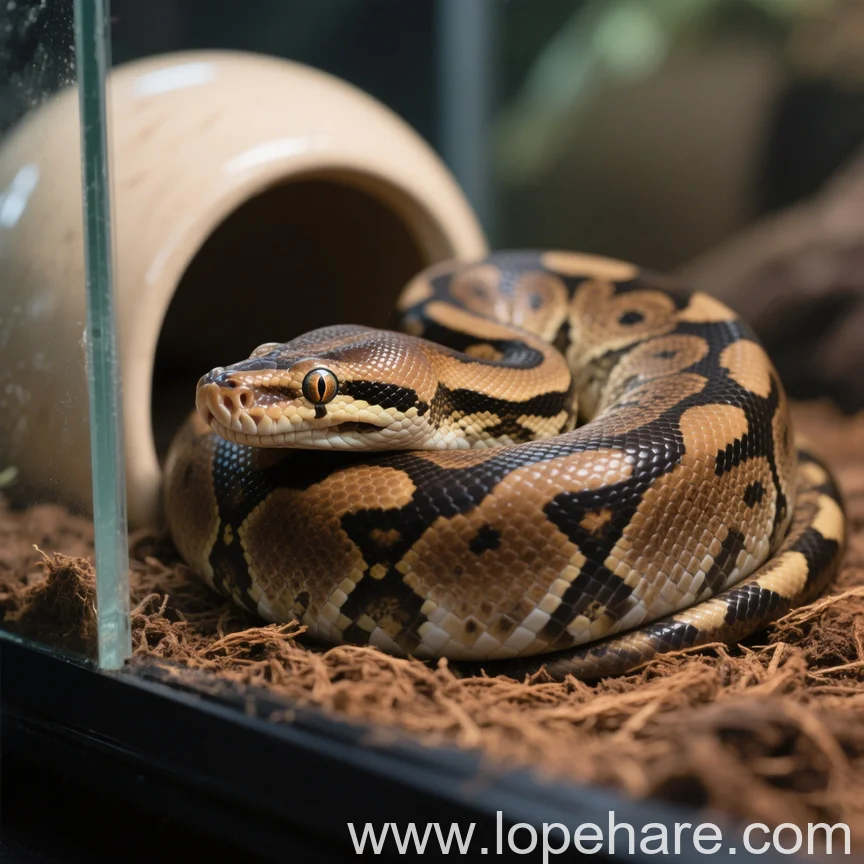
Reptile Husbandry
Ball Python Lifespan: How to Maximize Your Snake’s Health and Longevity
Introduction
At lopehare.com, we’re passionate about providing comprehensive guides for snake pet care, especially for unique and captivating species like the Ball Python (Python regius). One of the most common questions we hear from prospective and current owners alike is: “How long will my Ball Python live?” Understanding the potential lifespan of your scaled companion is crucial, as it’s a commitment spanning many years. More importantly, knowing the factors that influence their longevity empowers you to provide the best possible care, ensuring your Ball Python thrives, not just survives.
Average Ball Python Lifespan
In the wild, the lifespan of a Ball Python is significantly shorter due to predators, disease, and environmental challenges, typically ranging from 10 to 20 years. However, in captivity, with proper care, Ball Pythons have the potential to live much longer. The average lifespan for a captive Ball Python is generally cited as 20-30 years, but with exceptional husbandry, some individuals can live well into their 30s or even 40s. There are anecdotal reports and even documented cases of Ball Pythons living over 40 years in zoos and private collections. This remarkable difference highlights the profound impact responsible ownership has on their lives.
Key Factors for Longevity
Achieving the higher end of the Ball Python lifespan spectrum boils down to consistently meeting their specific needs. Several critical factors directly influence how long and how healthily your snake will live:
- Proper Husbandry: This is the single most important factor, encompassing enclosure setup, temperature, humidity, ventilation, and substrate.
- Appropriate Diet and Feeding: Providing the right size and type of prey on a suitable schedule, along with access to fresh water.
- Stress Reduction: Minimizing handling, providing ample hides, and ensuring a secure environment.
- Genetics: While not controllable by the owner, healthy lineage contributes to a stronger constitution.
- Regular Health Monitoring: Being observant of your snake’s behavior and physical condition to catch issues early.
- Access to Experienced Veterinary Care: Knowing a qualified reptile vet is essential for treating illnesses when they arise.
Commitment Required: A potential lifespan of 30+ years means owning a Ball Python is a significant, long-term commitment, comparable to owning a cat or dog.
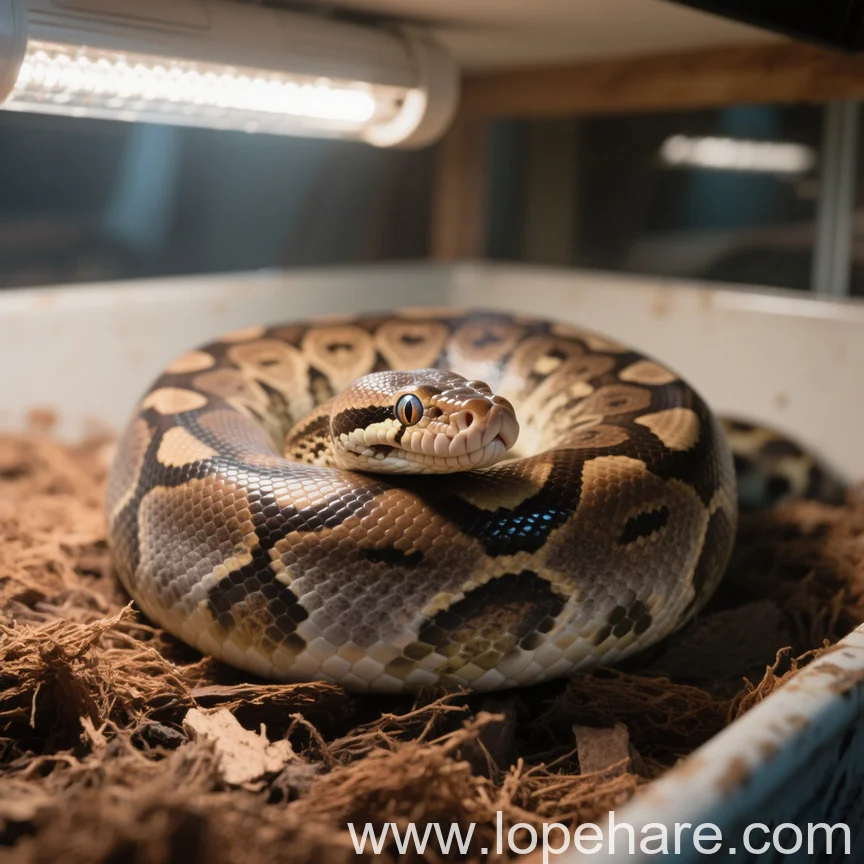
Proper Husbandry: The Foundation
Correct environmental conditions are non-negotiable for maximizing how long do ball pythons live in captivity. Ball Pythons are native to West and Central Africa, requiring specific thermal and humidity gradients.
- Enclosure: While hatchlings can start in smaller enclosures (e.g., 10-20 gallon), adults require enclosures providing ample space for exploration and stretching out. A minimum of a 40-gallon breeder tank or a purpose-built reptile enclosure is often recommended for an adult, though larger is better if space allows. The enclosure must be secure to prevent escapes.
- Temperature: A thermal gradient is crucial. Provide a basking spot around 88-92°F (31-33°C) and a cooler ambient side of 75-80°F (24-27°C). A temperature drop to the low 70s°F (approx. 22°C) at night is acceptable but not strictly necessary if ambient temperatures stay within the low 70s. Use reliable thermometers (digital recommended) at both ends of the enclosure. Heat sources (heat mats, ceramic heat emitters, or heat lamps) must be controlled by a thermostat to prevent burns or overheating.
- Humidity: Ball Pythons require moderate to high humidity, ideally between 50-60% ambient, rising to 70% during shed cycles. Low humidity is a major cause of incomplete sheds, respiratory issues, and dehydration, all of which negatively impact lifespan. This can be achieved through appropriate substrate (like cypress mulch or coconut fiber), a large water bowl, and potentially misting or a humid hide. Use a reliable hygrometer to monitor levels.
- Ventilation: Proper airflow is needed to prevent stagnant, overly humid conditions that can lead to respiratory infections, while still maintaining humidity. Screen tops on tanks with appropriate substrate usually work, but careful balance is key.
- Substrate: Choose a substrate that helps maintain humidity and is safe if ingested. Cypress mulch, coconut fiber, or a topsoil/sand mix (reptile-safe) are good options. Avoid pine or cedar shavings, which are toxic.
- Hides: Provide at least two secure hides – one on the warm side and one on the cool side – where the snake can feel safe and concealed. Hides are essential for reducing stress.
- Lighting: While Ball Pythons are primarily nocturnal, a natural light cycle is beneficial. Ambient room lighting or a low-wattage LED on a timer is sufficient. UVB lighting is generally considered optional for nocturnal species that are fed supplemented prey, but some keepers advocate for low-level UVB exposure, as it may offer benefits and replicate natural conditions more closely.
Diet and Nutrition
A proper diet is fundamental for preventing obesity, nutrient deficiencies, and related health issues, thereby influencing factors affecting ball python longevity.
- Prey Type: Ball Pythons typically eat rodents (mice and rats). Feeding pre-killed prey is safer for the snake as it eliminates the risk of injury from a live animal.
- Prey Size: The size of the prey item should be no wider than the widest part of the snake’s body. Feeding appropriately sized meals prevents regurgitation and digestive issues.
- Feeding Frequency:
- Hatchlings (up to ~6 months): Once every 5-7 days.
- Juveniles (6 months to ~2 years): Once every 7-10 days.
- Adults (~2+ years): Once every 10-14 days, or even less frequently for larger adults (e.g., every 3 weeks).
Overfeeding is a common issue and can lead to obesity, impacting organs and overall lifespan. Adjust frequency based on the snake’s body condition.
- Water: Always provide a bowl of fresh, clean water. The bowl should be heavy enough not to tip over and large enough for the snake to soak in if desired.
Obesity Risk: Ball Pythons are prone to becoming overweight if overfed. Monitor your snake’s body shape; it should be rounded but not excessively so. A visible spine or rib cage indicates underfeeding.
Health Monitoring and Vet Care
Being a vigilant observer is key to early detection of health problems. Regularly check your Ball Python for:
- Changes in appetite or feeding refusal (note that Ball Pythons are known for going off food seasonally or for periods, but monitor other symptoms).
- Lethargy or unusual behavior.
- Difficulty shedding (dysecdysis).
- Respiratory issues (wheezing, clicking sounds, mucus from the mouth or nose).
- Eye issues (cloudiness, swelling).
- Weight loss or gain.
- Lumps, bumps, or skin lesions.
- Mites or other parasites.
Establishing a relationship with a reptile-experienced veterinarian is invaluable. They can provide guidance on husbandry, perform check-ups, and treat illnesses. Don’t wait for a severe problem to find a vet.

Common Health Challenges
While not exhaustive, awareness of common issues can help owners prevent or quickly address problems that could shorten a Ball Python’s life:
- Respiratory Infections (RIs): Often caused by low temperatures, high humidity with poor ventilation, or stress. Symptoms include wheezing, clicking, open-mouth breathing, and nasal discharge.
- Inclusion Body Disease (IBD): A serious, often fatal viral disease. Symptoms vary but can include regurgitation, stargazing (disorientation), and difficulty shedding. Prevention focuses on strict quarantine of new animals.
- Mites: External parasites that feed on blood. Visible as tiny black or red dots, often around the eyes or in water bowls. Requires thorough cleaning and treatment of the snake and enclosure.
- Dysecdysis (Incomplete Sheds): Usually due to low humidity. Can lead to retained eye caps (spectacles) or tail tips, which can cause long-term damage or infection.
- Anorexia: Ball Pythons are notorious for refusing food, sometimes for months. While often stress-related or seasonal and not immediately life-threatening if the snake maintains body condition, persistent anorexia requires veterinary investigation to rule out underlying illness.
Conclusion: Maximizing Lifespan
As editors at lopehare.com, we see firsthand the dedication of keepers who provide exceptional care. A Ball Python isn’t a short-term pet; it’s a companion that can share decades of your life. Maximizing your Ball Python’s lifespan requires diligent attention to detail in providing the correct environment, a consistent and appropriate diet, minimizing stress, and being proactive about their health. While their care is specific, it is predictable and manageable once understood.
By adhering to best practices in husbandry and being observant of your snake’s well-being, you dramatically increase the chances of your Ball Python living a long, healthy, and enriching life, potentially reaching or exceeding that impressive 30-year mark. It’s a rewarding journey for those committed to the unique needs of these fascinating reptiles.
References:
- Ball Python. (n.d.). In Wikipedia. Retrieved from https://en.wikipedia.org/wiki/Ball_python
